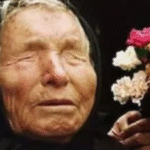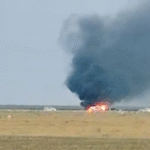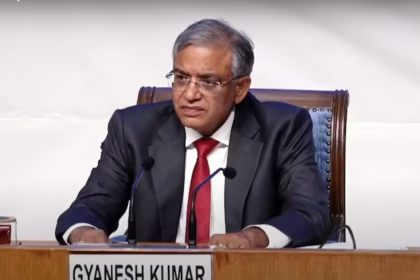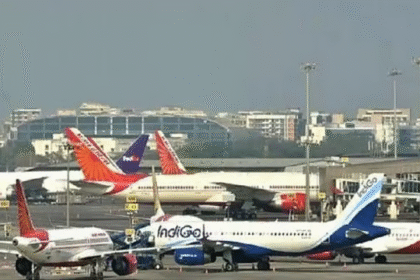Malegaon Blast Case: All 7 Accused Acquitted
A Verdict That Reverberated Across India
In a landmark judgment that closed a turbulent legal chapter spanning nearly two decades, a special National Investigation Agency (NIA) court in Mumbai acquitted all seven accused in the 2008 Malegaon blast case, including high-profile figures such as BJP MP Pragya Singh Thakur and Lt. Col. Prasad Shrikant Purohit. The verdict, announced on July 29, 2025, cited the lack of admissible evidence and procedural inconsistencies as grounds for the full acquittal.
This ruling — anticipated for weeks but still polarizing in its finality — marks the end of one of India’s most debated terror trials, one that intersected questions of religious extremism, institutional accountability, political ideology, and the delicate balance between justice and prejudice.
In this multi-part deep-dive, we will chronicle the entire trajectory of the case: from the tragic events of September 29, 2008, through the twists and turns of investigation, the political turbulence it caused, the lives of the accused, and the implications of this final acquittal — not just for Indian law, but for its politics, media, and national security apparatus.
The Crime: September 29, 2008 — Malegaon Bombing
Malegaon, a communally sensitive town in Maharashtra’s Nashik district, has long been marked by its history of religious tensions. On the evening of September 29, 2008, as the town began winding down after Ramadan festivities, a powerful bomb blast occurred near Bhikku Chowk, killing six people and injuring over 100 others. The blast, triggered using an improvised explosive device (IED) planted on a motorcycle, caused widespread panic.
Initially believed to be the work of Islamist terror groups — a pattern established in previous incidents — the investigation took an unexpected turn when evidence pointed towards Hindutva-linked suspects. This twist would come to define the case as a watershed moment in India’s counter-terrorism narrative.
The First Shock: A Shift in Investigative Lens
In early October 2008, Maharashtra’s Anti-Terrorism Squad (ATS), under the then leadership of Hemant Karkare, arrested several suspects linked to Hindu right-wing groups, including Sadhvi Pragya Singh Thakur, a former ABVP activist, and Lt. Col. Purohit, a serving officer in the Indian Army’s Military Intelligence. The motorcycle used in the blast was traced to Pragya, while Purohit was accused of supplying RDX and being part of a radical group called Abhinav Bharat.
This marked the first time in independent India’s history that members of a Hindu nationalist background were arrested in a terror case. The term “Hindutva terror” entered the national lexicon, triggering fierce debates, legal battles, and political polarization that would last for years.
The narrative shook public perception — at once challenging the assumption that religious extremism in India flowed only from one direction, and also igniting allegations that the case was being politically manipulated to target nationalists.
A Fractured Investigation: From ATS to NIA
With the assassination of Hemant Karkare during the 26/11 Mumbai attacks, the investigation lost its principal architect. Over time, control of the case shifted from the ATS to the National Investigation Agency (NIA), formed in 2009 after the Mumbai attacks.
In 2016, during the tenure of the BJP-led central government, the NIA filed a supplementary chargesheet that diluted many of the earlier charges, especially those against Pragya Thakur. The agency said that there was insufficient evidence to prosecute her under the stringent Unlawful Activities (Prevention) Act (UAPA).
This change in position led to accusations that the NIA was soft-pedaling the case under political pressure. Opposition parties alleged that the investigative shift had been engineered to protect ideological allies of the ruling government. However, the agency maintained that its conclusions were based solely on the lack of credible and corroborative evidence.
The Legal Marathon: 17 Years of Uncertainty
From arrests in late 2008 to the final verdict in 2025, the Malegaon blast case was a long, winding judicial process. More than 500 witnesses were examined, many of whom turned hostile. Accusations flew thick and fast, not only between defense and prosecution, but also between investigative agencies.
At different points, key aspects of the case unraveled:
- Confessional statements given under the Maharashtra Control of Organised Crime Act (MCOCA) were ruled inadmissible.
- Forensic evidence linking Purohit and others to the RDX was called into question.
- Witnesses recanted, citing coercion, political intimidation, or memory lapses.
- Chain of custody issues weakened the evidentiary foundation.
One of the most significant turning points came in 2017, when the Supreme Court granted bail to Pragya Singh Thakur, stating that there was no prima facie evidence to deny her release. This emboldened the defense, especially after Thakur was elected to the Lok Sabha in 2019 from Bhopal as a BJP candidate.
The trial limped on, punctuated by legal technicalities, delayed hearings, and public fatigue. For the families of victims, the wheels of justice had turned excruciatingly slowly, leaving them feeling forgotten.
The Acquittal: Reasoning of the NIA Court
In a judgment running over 600 pages, Special Judge A. K. Lahoti of the NIA Court delivered the final word: All seven accused were acquitted of all charges related to the 2008 Malegaon blast.
The court stated:
“The prosecution has failed to bring home the charges leveled against the accused. The evidence brought before the court does not prove the involvement of the accused beyond reasonable doubt.”
Key reasons cited by the court:
- The forensic chain of evidence was broken in multiple places.
- No direct link could be established between the alleged RDX and the accused.
- Witnesses’ testimony lacked consistency and was often contradictory.
- Confessions recorded under coercion or without proper legal sanction were inadmissible.
- The motorcycle linked to Pragya had changed hands multiple times, creating doubt about exclusive possession.
While the court stopped short of blaming the prosecution for malice, its language made it clear: the case had not been proven to the standard required under criminal law.
Public Reaction: Relief, Rage, and Reflection
The public reaction was predictably divided. For supporters of the accused, especially Pragya Thakur’s political backers, the verdict was seen as long-overdue vindication. Celebrations erupted in parts of Bhopal, where Thakur remains a polarizing yet influential figure.
In contrast, opposition leaders — including Congress’s Rahul Gandhi and NCP’s Sharad Pawar — condemned the verdict as a failure of the justice system, accusing the government of systematically dismantling the case through institutional interference.
Human rights activists and victim families expressed deep disappointment. For them, justice remained elusive. “Seventeen years, and now they tell us no one is guilty?” said Aslam Shaikh, who lost a cousin in the blast. “If they were not guilty, then who killed our people?”
The End of a Legal Saga, The Start of a Political Debate
With the acquittal now official, the Malegaon blast case stands as one of the most consequential — and controversial — terror trials in Indian history. It tested the capacity of investigative agencies, exposed weaknesses in judicial procedure, and raised critical questions about how India views domestic extremism — depending on who is accused.
The Accused: Who Were They and What Were the Charges?
While much of the media coverage over the years focused on just two figures — Pragya Singh Thakur and Lt. Col. Prasad Purohit — the Malegaon blast case involved seven accused individuals, each of whom spent years under the cloud of terror charges, judicial custody, bail restrictions, and social stigma.
Here’s a detailed look at each of the seven:
1. Pragya Singh Thakur
Arguably the most high-profile among the accused, Pragya Singh Thakur was a sadhvi affiliated with Hindu nationalist organizations like the ABVP and Akhil Bharatiya Hindu Mahasabha. Arrested in 2008, she was accused of owning the motorcycle used in the blast and of being part of a broader Hindutva extremist conspiracy.
Thakur’s rise to political prominence began when she was granted bail in 2017 on health grounds. In 2019, she was elected as a Member of Parliament from Bhopal on a BJP ticket, stirring national debate. Her controversial statements, including remarks about Nathuram Godse, further polarized public opinion.
2. Lt. Col. Prasad Shrikant Purohit
A decorated officer of the Indian Army’s Military Intelligence, Lt. Col. Purohit was accused of playing a key role in supplying RDX for the bomb and of being involved with Abhinav Bharat, an alleged radical group advocating a Hindu rashtra.
The defense maintained that Purohit had infiltrated extremist groups as part of an intelligence operation, and was being falsely framed. His time in judicial custody lasted over nine years before he was granted bail by the Supreme Court in 2017, which noted that evidence linking him directly to the explosion was inconclusive.
3. Ramesh Upadhyay
A retired Army Major, Ramesh Upadhyay was alleged to be the coordinator between military sympathizers and civilian extremist elements. He was said to have attended meetings of Abhinav Bharat where the Malegaon plot was discussed. His defense challenged the validity of taped conversations and the lack of direct action tying him to the blast.
4. Sudhakar Chaturvedi
An astrologer by profession, Chaturvedi was accused of being a logistics facilitator and was named in connection with storing and handling explosives. The court found no forensic evidence connecting him to the site of the bombing or the materials used.
5. Ajay Rahirkar
As the alleged treasurer of Abhinav Bharat, Rahirkar was charged with funding the Malegaon operation. The prosecution claimed that organizational funds were used to purchase explosives and facilitate travel. However, during trial, witnesses either turned hostile or failed to corroborate this financial link.
6. Sameer Kulkarni
Kulkarni, a former RSS pracharak, was said to be an ideological motivator and part of the radical circle that conceptualized attacks on perceived “anti-Hindu” targets. His defense argued that the evidence against him was purely circumstantial and based on association rather than action.
7. Sudhakar Dwivedi (Swami Amritanand Devtirth)
A self-styled spiritual leader, Dwivedi was accused of being the spiritual anchor of the alleged conspiracy. He was said to have provided ideological justification for militant action and blessed the “mission.” But the court observed that no material link between him and the Malegaon blast could be established.
From ‘Islamic Terror’ to ‘Hindutva Terror’: A Paradigm Shift
Until 2008, India’s national security discourse was largely dominated by threats from Pakistani-backed terror groups, homegrown Islamist cells, and Kashmir insurgency networks. The Malegaon blast case upended this paradigm by introducing, for the first time in legal parlance, the possibility of Hindu extremist involvement in terrorism.
This shift in narrative had massive ramifications:
- The term “Saffron terror” was coined by some politicians and media houses, triggering sharp backlash.
- Then Home Minister P. Chidambaram publicly used the phrase, which was later disowned by Congress leadership fearing alienation of Hindu voters.
- The RSS and BJP denounced the term as a political smear campaign aimed at demonizing Hindu nationalism.
- Civil society debates erupted over whether terror should be defined by religion or by acts alone.
While legal systems refrained from using ideological labels, the framing of the case became a rallying point for both Hindu nationalist organizations defending the accused and liberal civil rights groups questioning double standards in counter-terror enforcement.
The Handover: From ATS to NIA — A Tale of Two Investigations
The early phase of investigation, led by the Maharashtra Anti-Terrorism Squad (ATS), was aggressive and high-profile. Under Hemant Karkare, the ATS built a case that alleged the formation of a shadow radical network operating under the guise of religious organizations.
Karkare’s death in the 26/11 Mumbai attacks only added to the case’s mystique — with conspiracy theories later surfacing that he had been “eliminated” for uncovering uncomfortable truths.
However, with the establishment of the National Investigation Agency in 2009, the case took a different turn. The NIA’s approach was more cautious, procedural, and ultimately skeptical of the original charges.
In 2016, the NIA filed a supplementary charge sheet dropping key charges against Pragya Thakur and downplaying the strength of evidence collected by the ATS.
Critics accused the agency of political bias, especially as it came under a government led by the BJP, the party with ideological links to some of the accused. Supporters argued that the NIA simply corrected flaws in a politically charged and poorly handled investigation.
Either way, the contrast in approach between ATS and NIA became a core issue in the court’s deliberations — with the defense pointing out inconsistencies, and the prosecution struggling to harmonize two divergent narratives.
Justice, Truth, or Closure? The Larger Questions
With all seven accused now acquitted, the fundamental question remains unanswered: Who bombed Malegaon in 2008?
- If not these individuals, then where is the accountability?
- Were false leads followed due to political bias or investigative incompetence?
- Were the accused victims of a media trial? Or were they beneficiaries of a political windfall?
These questions strike at the heart of India’s democratic institutions — from police agencies to courts to the media. For victims’ families, the lack of closure is devastating. For the accused, even acquittal cannot erase the years spent in jail, the social alienation, and the mental trauma of being labeled terrorists.
The People Behind the Headlines
The Malegaon blast case, more than a judicial story, was a human saga — of lives interrupted, ideologies questioned, and justice delayed. This part has looked beyond the headlines to understand who the accused were, how the narrative of Hindutva terror evolved, and how investigative institutions shaped — or derailed — the path to truth.
As we move forward, the story only deepens. For if the law has spoken, and yet questions linger, then justice, perhaps, remains incomplete.
In the modern criminal justice landscape, no high-profile case is tried solely within the confines of a courtroom. The 2008 Malegaon blast case was arguably one of the earliest and most enduring examples of a parallel media trial, where public perception was shaped not just by facts but also by narratives, prime-time debates, headlines, and ideological posturing.
From the moment Pragya Thakur’s name surfaced in the investigation, television studios exploded into fiery debates — often presuming guilt, dissecting her ideological leanings, and drawing unsubstantiated links with larger “saffron terror” networks.
Leading media houses, both English and vernacular, sensationalized the case:
- Newsrooms replayed images of the blood-soaked slippers and shattered windows in Malegaon.
- Panel discussions turned into shouting matches over whether Hindu terror existed or was being manufactured.
- Channels carried leaked transcripts, many of which were later ruled inadmissible, as “irrefutable proof” of a conspiracy.
- Certain outlets ran headlines labeling the accused as “religious extremists” long before the charges were framed, let alone proven.
The effects of this extended beyond the seven individuals on trial. The public’s understanding of terrorism began shifting, from a singular focus on Islamist extremism to a more polarized, politically driven discourse.
Yet, the same media ecosystem that had vilified the accused in 2008–2010, quietly stepped back as the case collapsed in court. Acquittals were mentioned, often cursorily. Reputational repair was absent. The damage had been done.
Pragya Singh Thakur: From Jail Cell to Parliament Bench
Among the accused, Pragya Singh Thakur’s trajectory is the most politically dramatic. Once branded a terror suspect by multiple agencies, she has since emerged as an elected Member of Parliament, occupying one of the most visible roles within the ruling BJP.
In 2019, her candidature from Bhopal sparked a political storm. The Congress fielded Digvijaya Singh, a heavyweight, in a symbolic counter. Yet, Thakur won by a margin of over 3 lakh votes. To some, her victory was proof of India’s shift toward assertive Hindutva. To others, it represented the politicization of justice.
Post-election, her public conduct has remained controversial:
- She called Nathuram Godse a “patriot,” later retracting under party pressure.
- She made headlines for allegedly disrupting parliamentary decorum with inflammatory speeches.
- Her attendance record in Parliament has been poor, yet she remains a symbolic figure of ideological resilience for the Sangh Parivar.
Despite legal exoneration, the tag of “accused in a terror case” continues to shadow her legitimacy. But for her supporters, she embodies the narrative of persecution, survival, and vindication.
Politics of Polarization: A Case That Changed the Game
The Malegaon blast case reverberated across India’s political spectrum, altering electoral rhetoric, realigning ideological priorities, and sharpening community divisions.
For the Congress and UPA:
- Initially, the case was used to project neutrality in counter-terrorism, showing that the government would act even if the accused were from the majority community.
- However, the term “saffron terror,” used by some leaders, backfired — leading to accusations of minority appeasement and political opportunism.
- In hindsight, their embrace of the ATS narrative — without due diligence — led to a trust deficit among large segments of the Hindu population.
For the BJP and RSS:
- The case was seen as a conspiratorial tool to malign Hindutva.
- RSS leaders compared it to the “Emergency era excesses”, alleging ideological witch hunts.
- The BJP used the issue to consolidate its core base, painting itself as the only party standing up for wrongly accused patriots.
Over the years, this case — along with others like the Samjhauta Express blast case, where all accused were also acquitted — became ammunition in national election campaigns, further entrenching polarization.
UAPA, Investigative Overreach, and Legal Reform
The Malegaon case was among the first major cases prosecuted under the Unlawful Activities (Prevention) Act (UAPA). The law, meant to target terrorism and secessionist threats, allowed for long periods of incarceration without bail, in-camera proceedings, and a heavy burden on the accused.
While critics of the accused argued these tools were necessary given the gravity of terrorism, defense lawyers and civil rights groups repeatedly warned of abuse of process:
- Many of the accused spent 8–10 years in custody before being granted bail — only to be eventually acquitted.
- Witnesses turned hostile, not necessarily out of fear, but because initial testimonies were often taken under duress.
- Forensic evidence presented by ATS was often uncorroborated or inadmissible in NIA’s review.
The Malegaon blast trial exposed fault lines in India’s criminal justice architecture: powerful laws, weak oversight, political overreach, and slow adjudication. It sparked a national debate on whether UAPA should be amended or repealed, particularly after other high-profile acquittals.
India’s Image Abroad: Questions of Justice and Pluralism
Though largely underreported internationally, the Malegaon case — especially after 2014 — became part of broader conversations in diplomatic and academic circles on India’s commitment to secularism and rule of law.
- Human rights organizations questioned selective investigations, especially as Muslim victims in Malegaon received little sustained attention while accused Hindu figures became MPs.
- Academic papers from universities in the UK and U.S. debated whether India’s anti-terror architecture was becoming communalized.
- Foreign media outlets like The Guardian, Al Jazeera, and New York Times carried periodic stories about the case — often framing it within the broader rise of Hindu nationalism.
India’s embassies and envoys denied any bias, citing the independence of the judiciary and parliamentary process. But the damage to perception, however limited, was palpable in civil society, think tanks, and diaspora activism.
Narratives vs. Truth
Seventeen years after the blast, the court has ruled. Yet, the court of public opinion remains divided. The Malegaon blast case stands not just as a tragic episode of terror and investigation, but as a mirror reflecting the fissures in India’s political, legal, and cultural psyche.
- Was it a case of overreach by a system desperate to show neutrality in terrorism cases?
- Was it a carefully engineered miscarriage of justice aimed at polarizing voters?
- Or was it simply the failure of the state to prosecute a complex crime within a polarized society?
Whatever the answer, one truth remains: when justice becomes entangled with ideology, the nation pays the price.








